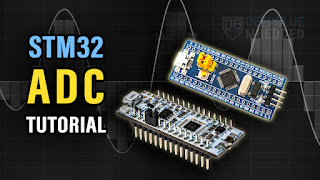What happens if sensor not secured on circuit board?
If a sensor isn’t mechanically secured to the PCB (or its enclosure), you’ll get a cocktail of reliability and accuracy problems:
What can go wrong
1) Intermittent electrical contact
-
Vibration/handling makes headers and solder joints flex → momentary opens, spikes, or dropouts.
-
Fretting corrosion on loose connectors increases contact resistance over time.
2) Mechanical noise & false readings
-
The sensor moves relative to the board/environment, so it “measures the mount,” not the target.
-
IMUs/accelerometers/gyros: extra peaks from resonance; bias shifts with board flex.
-
Magnetometers/Hall: changing orientation/gap → wildly varying field readings.
-
Mics/piezo/pressure: microphonics; tubing/port misalignment causes offset or lag.
-
Optical/ToF/cameras: mis-aim, focus shift, stray light leaks.
-
Temperature: poor thermal coupling or airflow drafts → slow or wrong readings.
-
3) Drift from package stress
-
Board flex/thermal cycling bends the package → offset drift (common with MEMS and pressure sensors).
4) EMI & analog nasties
-
A loose lead/wire becomes an antenna; movement injects triboelectric/microphonic noise into high-impedance inputs.
5) Reliability damage
-
Repeated motion cracks solder joints, vias, or bond wires; cables fatigue without strain relief.
6) System-level effects
-
Control loops (motors, drones, PID heating) hunt or oscillate because the feedback signal isn’t stable.
How to secure sensors (without crippling them)
-
Use proper fixtures: screws + standoffs, snap-fits, or molded bosses. Add thread-locker where appropriate.
-
Adhesive staking: small fillets of neutral-cure silicone/epoxy/UV acrylic at package corners or on connectors.
-
Avoid acetic-cure silicone near copper; don’t block vents/optical windows/mic ports.
-
-
Vibration management: foam pads, elastomer grommets, or an isolated sensor island PCB cutout for IMUs.
-
Strain relief: tie-downs for cables; leave service loops; use flex relief boots.
-
Thermal coupling (temp sensors): thermal pad/grease to the target; shield from drafts if measuring board temp.
-
Alignment features: dowel pins/shims for optical, Hall, or pressure-port alignment.
Quick diagnostics if you suspect a loose sensor
-
Tap test: lightly tap or wiggle harnesses and watch live data for spikes or dropouts.
-
Vibration sweep: run at expected vibration frequencies; look for narrow-band peaks (resonance).
-
Orientation/pressure jig: check output vs. known orientation or pressure; note hysteresis after movement.
-
Continuity & scope: probe supply/signal during mechanical agitation for glitches.
Design tips up front
-
Place IMUs near the product’s center of rotation; keep the local PCB stiff.
-
Reserve keep-outs around ports/optics; specify torque for mounts.
-
Add bulk/decoupling capacitors at the sensor and ground stitching nearby.
-
For stepper/BLDC environments, route sensor traces away from high-di/dt loops and use shields/filters.




评论
发表评论